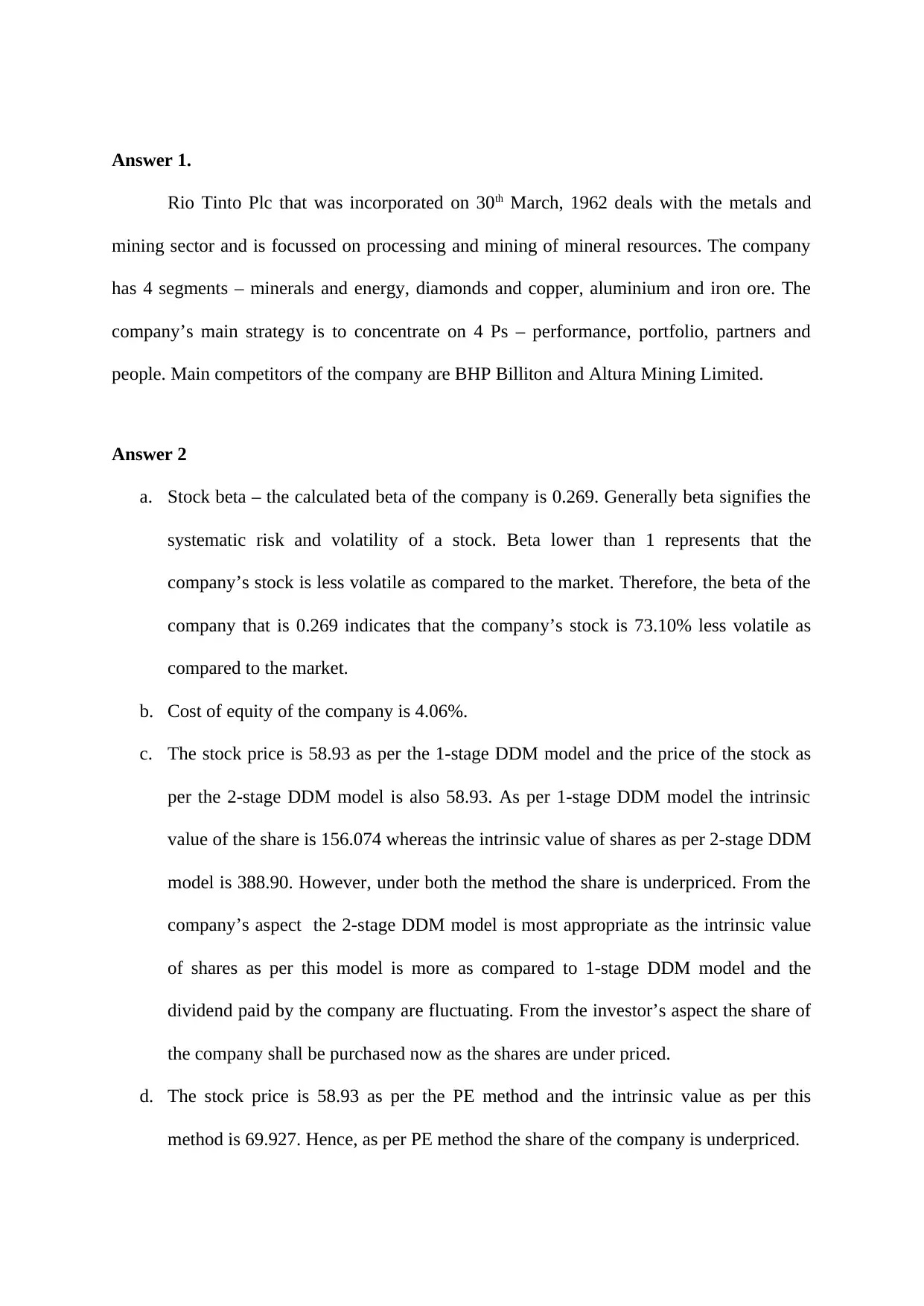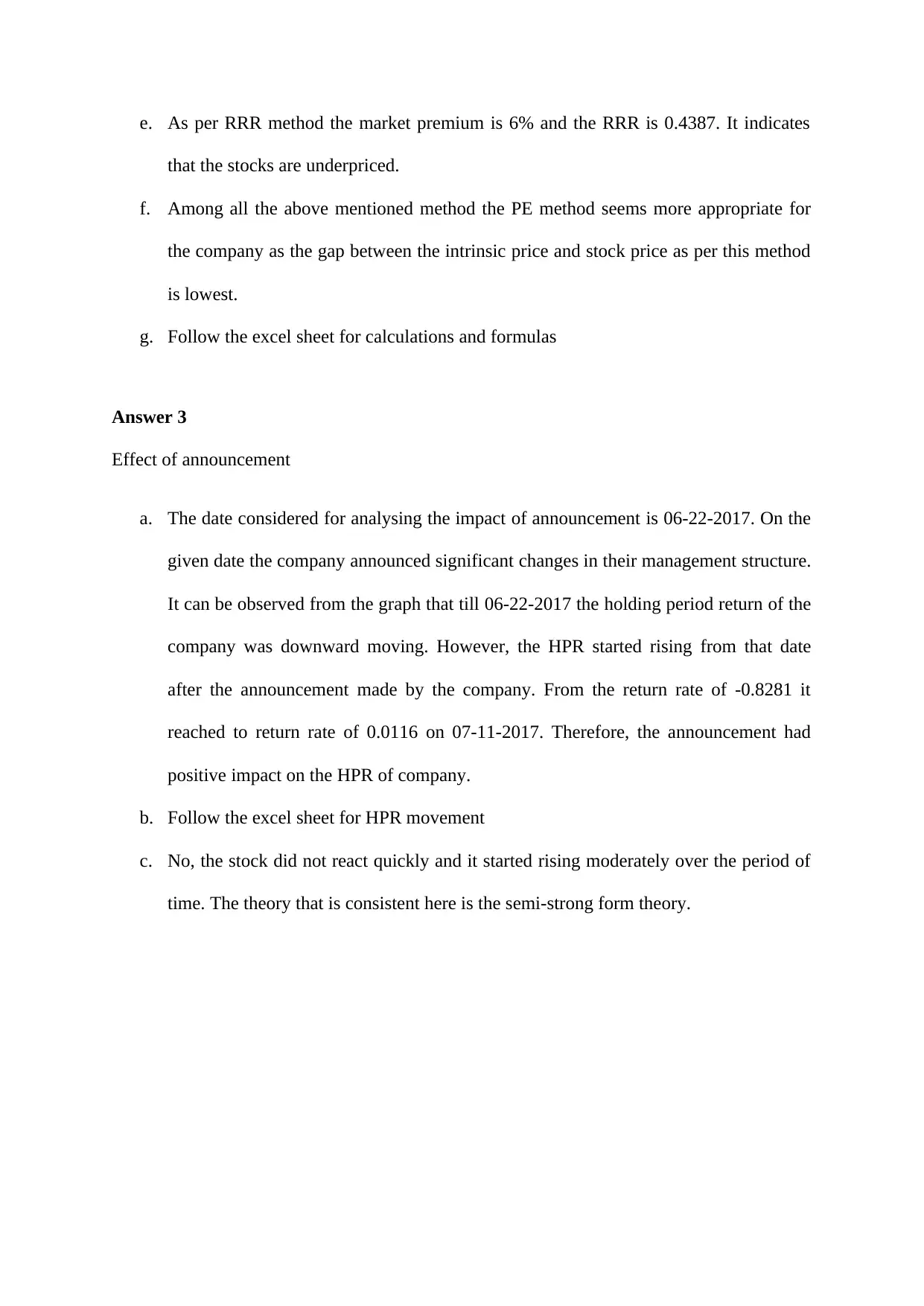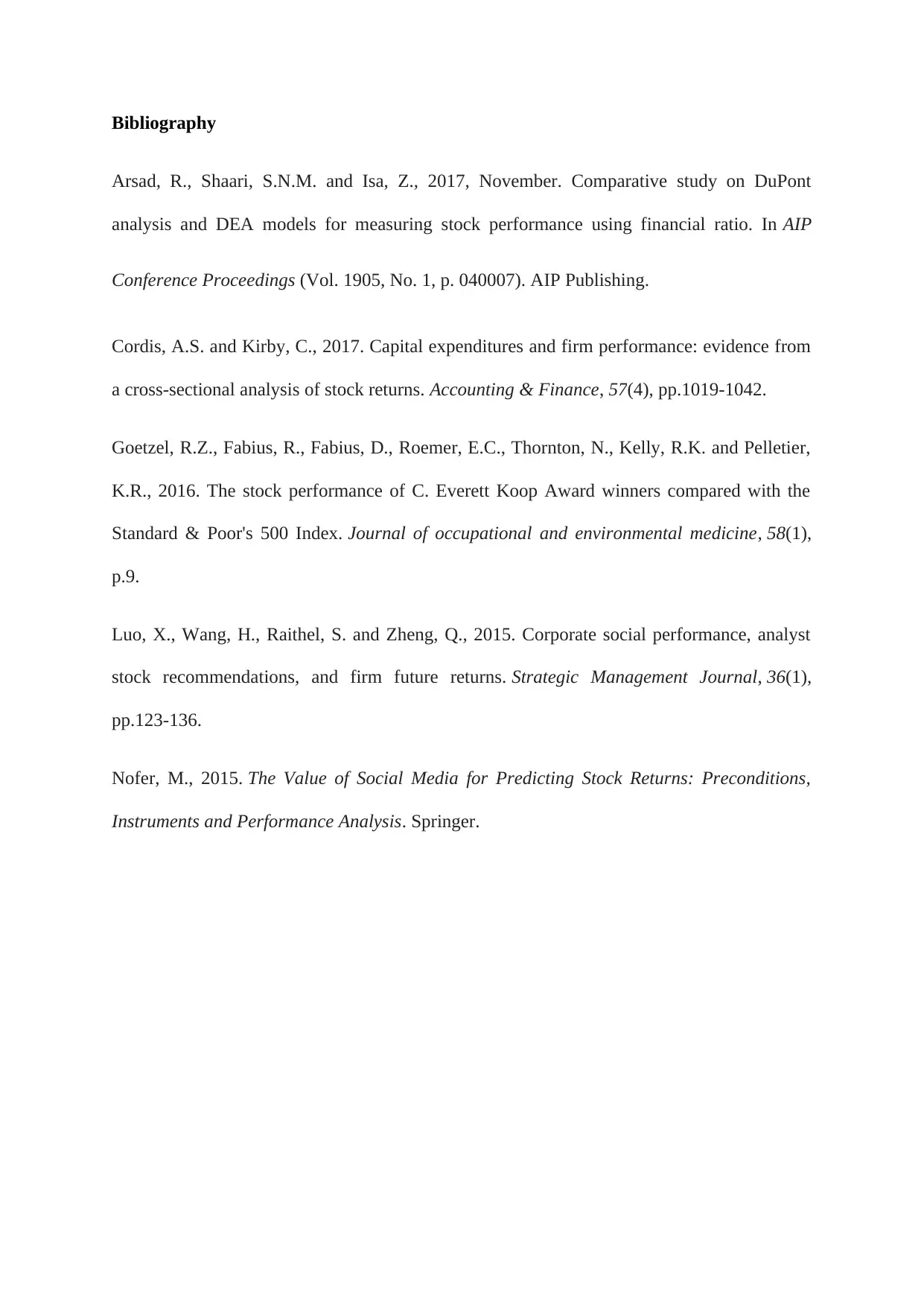Rio Tinto Stock Valuation Report: DDM, PE, RRR & Market Announcement
VerifiedAdded on 2023/06/11
|3
|766
|127
Report
AI Summary
This report provides a comprehensive stock valuation analysis of Rio Tinto Plc, a metals and mining company, using various financial models. It begins by introducing the company's background, segments, and main competitors. The analysis includes calculations of stock beta, cost of equity, and stock prices using the 1-stage and 2-stage Dividend Discount Models (DDM), Price-to-Earnings (PE) method, and Required Rate of Return (RRR) method. The report also assesses the impact of a management structure announcement on the company's Holding Period Return (HPR), concluding that the announcement had a positive effect, consistent with the semi-strong form theory. The PE method is deemed most appropriate due to the smaller gap between intrinsic and stock prices. Desklib offers this and other solved assignments to aid students in their studies.
1 out of 3










![[object Object]](/_next/static/media/star-bottom.7253800d.svg)